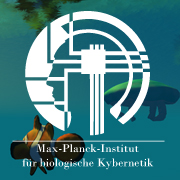Science
Resonant Breathing and Heart Rate Variability Training
Chronic stress is one of the major problems in our current fast paced society. We are constantly bombarded with information affording us to take actions and it becomes increasingly difficult to calm our minds. The body reacts to environmental stress with physiological changes (e.g. accelerated heart rate), increasing the activity of the sympathetic nervous system. Once the stressful situation is over the parasympathetic branch of the autonomic nervous system takes control and brings the body back into a balanced state. This is a healthy and helpful mechanism as long as one manages to get out of the stressful situation and returns into a balanced state. However, people nowadays often are constantly under pressure, perceiving many stressful events every day and therefore are chronically out of balance. Hence, effective stress management techniques become of utmost importance and should be made readily available for everyone.
Biofeedback training to increase heart rate variability (HRV) is a standard method used in stress management (Lehrer, Woolfolk, & Sime, 2007). Paced breathing at approximately 6 breaths per minute leads to a coupling between breathing and heart rate (resonant breathing) which stimulates the parasympathetic nervous system (PSN) resulting in relaxation and improved cognitive performance (Prinsloo et al., 2011). This project aims at enhancing current stress management techniques by combining paced breathing with the use of state of the art virtual reality (VR). Virtual environments provide a great way to quickly transport a user out of a stressful situation into a personalized experienced tailored to induce positive emotions and thoughts of well-being (Riva et al., 2007). In comparison to other current methods for stress management like meditation or yoga which are based on similar techniques, e.g. observing the bodily state with an equanimous mind set, our proposed approach might be more easily accessible for people since the conditions for a relaxed mind set can be quickly achieved through the use of VR technology.
We use the underwater world in order to induce a relaxed state of mind in which people enjoy watching several kinds of fish and can forget about their stressful thoughts. In the world they can see a jelly fish moving up and down which guides them in their breathing. We are comparing a group of participants which just follow a guiding signal with their breath to people that at the same time can experience the underwater world. We want to find out if the people in the underwater world group are able to relax and enjoy the virtual environment at the same time or if they are maybe too distracted. Our hope is that through the use of VR people can more easily relax, have fun and are still able to increase their HRV and follow the resonant breathing signal.
Physiological measurements and questionnaire data collected during our experiments show that people in the underwater group can indeed follow the breathing signal and at the same time enjoy the virtual world. They rate the experience as more fun compared to the control group and report that they would like to use it as a relaxation tool at home.
References
Lehrer, P., Woolfolk, R. , & Sime, W. (2007). Principles and practice of stress management.
Prinsloo, G. E., Rauch, H. G. L., Lambert, M. I., Muench, F., Noakes, T. D., & Derman, W. E. (2011). The Effect of Short Duration Heart Rate Variability ( HRV ) Biofeedback on Cognitive Performance During Laboratory Induced Cognitive Stress. Applied Cognitive Psychology, 801(October 2010), 792–801.
Riva, G., Mantovani, F., Capideville, C. S., Preziosa, A., Morganti, F., Villani, D., … Alcañiz, M. (2007). Affective interactions using virtual reality: the link between presence and emotions. Cyberpsychology & Behavior : The Impact of the Internet, Multimedia and Virtual Reality on Behavior and Society, 10(1), 45–56. doi:10.1089/cpb.2006.9993
Virtual Restorative Environments
Research has shown that exposure to a naturalistic environment as compared to exposure to a city environment can have restorative effects on cognitive abilities like attention and memory (Berman, Jonides, Kaplan, 2008; Hartig, Mang, Evans, 1991). Furthermore, Berman et al. have also shown that even brief exposure to nature images as compared to city images can have similar effects. Recently certain virtual environments were found to have a positive impact on participants as well (Knight, Stone, Qian, 2012; Valtchanov, Barton, Ellard, 2010; Ziesenitz, 2009).
The goal of the present study was to test whether the virtual environment we created, the underwater world, has restorative effects. To this end, we compared the effect of being in the underwater world for 10 minutes on cognitive tasks to the effect of viewing a slideshow of city pictures (both through a head-mounted-display). Such a procedure had been previously used to assess restorative effects (Berman, Jonides, Kaplan, 2008). Before and after exposure to the environments participants performed a memory task (auditory backwards digit span) and a visual attention task (ANT, Fan, McCandliss, Sommer, Raz, Posner, 2002). Both have previously been found to be influenced by restorative environments. During the study the heart-rate, electrodermal activity and breathing were recorded in order to assess the physiological effects of the environments. Furthermore, a questionnaire was administered after each experiment in order to quantify the subjective experience of the environments.
References
Ziesenitz, 2009 „Die Natur als Erholungs ( t ) raum ?“ Doktorarbeit, Universität Kassel.

